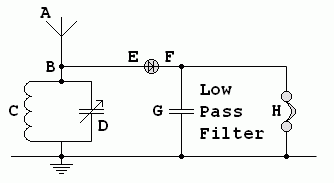

Radio, AM and FM |
|
To gain access to revision questions, please sign up and log in.
a

cAdvantages
|
dDisadvantages
|
fAmplitude ModulationAM transmitters vary the amplitude of the carrier wave.
AM Demodulation or Detection
|
hFrequency ModulationFM transmitters vary the frequency of the carrier wave.
FM on a Picoscope
Advantages of FMThe sound quality is better with a wider range of frequencies being faithfully reproduced. FM is transmitted on the VHF band. There is less radio interference on this band so the signals are clearer. FM is much less affected by amplitude noise from lightning strikes or industrial machinery so the sound is clearer. At night AM radio signals from distant transmitters interfere with the local transmitters so AM radio is not so good. kFM DisadvantagesThe transmitters have a range of only 20 to 50 miles depending on the terrain so more transmitters are needed to cover the country. AM transmitters on the Medium Frequency or Medium Wave band have a range up to several hundred miles. Fewer transmitters are needed to cover the country. FM radios cost more to build because they are more complex than AM.
|
reviseOmatic V3 Contacts, ©, Cookies, Data Protection and Disclaimers Hosted at linode.com, London